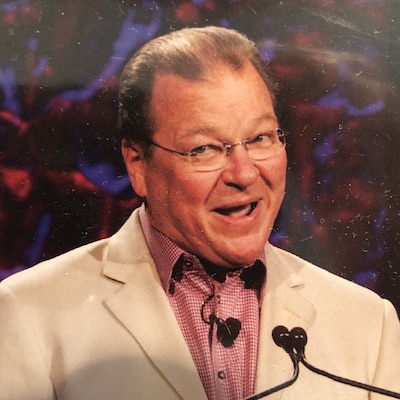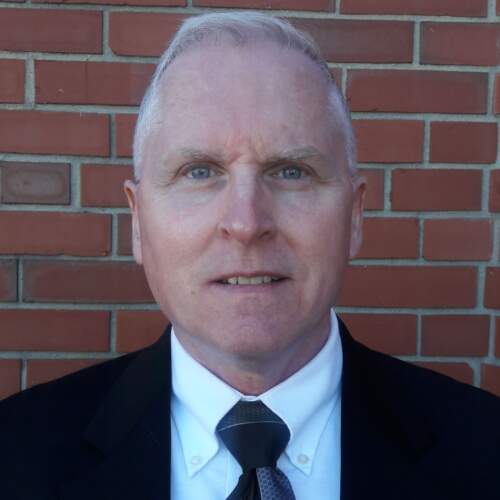CD293: NTSB Transportation Safety Warnings
- CD293: NTSB Transportation Safety Warnings Jennifer Briney 48:16
In March, the Senate received testimony from the Chair of the National Transportation Safety Board about some transportation related dangers that you should know about. In this episode, hear testimony about those dangers, including those posed by airborne tourism companies, electric vehicles, and self driving Technology. You will also hear a stunning NTSB finding about a likely profit-prioritization decision of railroad company Norfolk Southern, which unnecessarily lead to the poisoning of East Palestine, OH. Please Support Congressional Dish – Quick Links Contribute monthly or a lump sum via Support Congressional Dish via (donations per episode) Send Zelle payments to: Donation@congressionaldish.com Send Venmo payments to: @Jennifer-Briney Send Cash App payments to: $CongressionalDish or Donation@congressionaldish.com Use your bank’s online bill pay function to mail contributions to: Please make checks payable to Congressional Dish Thank you for supporting truly independent media! Background Sources Recommended Congressional Dish Episodes Traffic Fatalities National Center for Statistics and Analysis. April 2024. National Highway Traffic Safety Administration. Helicopter Crashes May 10, 2022. National Transportation Safety Board. n.d. National Transportation Safety Board. Audio Sources March 6, 2024 Senate Committee on Commerce, Science & Transportation Witnesses: Jennifer Homendy, Chair, National Transportation Safety Board Clips Sen. Eric Schmitt (R-MO): I did have some questions. I know that Senator Fisher mentioned some of this earlier as relates to electric vehicles. The weight of some of these vehicles, including, I know you mentioned the battery alone can be the weight of a Honda Civic or a Toyota Corolla, and so there’s certainly safety issues there. It relates to guardrails and other vehicles on the road. You would agree with that, right? Jennifer Homendy: Yes. Sen. Eric Schmitt (R-MO): There’s also issues, I wanna talk about our infrastructure too. The weight of these vehicles, the strain that it can have on parking garages, roads, and bridges. The amount of Money that will be expended to either reinforce or repair. Who is looking at this? Because we have a mandate for auto manufacturers to produce 50% of their fleet to be electric vehicles by 2030. I know there’s a new rule in the works to have that number increased. I don’t know if it’s 65% or 75% by 2032, that’s being considered. So it seems to me we’re entering this phase as it relates to these mandates for electric vehicles and all of these repercussions, all of these ancillary concerns, I don’t know who’s addressing it, so I’m asking you, are you guys looking at this? Who is looking at this? Because this seems to be a disaster on the horizon for the American people and our infrastructure, but I don’t hear a lot of talk about it. Jennifer Homendy: Thank you, Senator. I have raised this consistently over the past year and a half, starting with a transportation research board where I raised concerns with respect to increasing size and weight of all vehicles, but particularly the weight of electric vehicles that we really needed to look at the safety impact, not just on crashes, but to our infrastructure as well, and protecting people. The whole reason why we have a guardrail is to protect people when there is a crash. Yet it wouldn’t withstand some of the crashes with some of these high weights of heavy vehicles, including heavy electric vehicles as was demonstrated by the University of Nebraska. Somebody needs to take action here. We have repeatedly flagged it. It is within the Department of Transportation’s purview to do that, and I encourage them strongly to get ahead of it. We’re behind right now. Sen. Eric Schmitt (R-MO): As it relates to first responders who are responding to crashes that lithium batteries are involved with, what is your take on the safety for our first responders as they’re responding to these EV crashes? Jennifer Homendy: It’s a significant danger. We issued a report just a few years ago raising concerns regarding a number of crashes that we investigated involving electric vehicles and the risk to emergency responders from stranded energy inside the battery and components and the significant potential for shock. We also raised concerns with respect to secondary responders, which are the tow truck operators because we saw many of these vehicles reigniting on the tow truck and up to five days later in the tow yard. Sen. JD Vance (R-OH): February 3rd, 2023 derailment of the train. Is it true that Norfolk Southern’s contractors monitored temperatures on one of the chemical tank cars from the afternoon of February 5th into the afternoon of February 6th, which is when the controlled burn happened, and communicated their initial readings to Oxy Vinyls, the shippers in charge of the vinyl chloride cars? Jennifer Homendy: That’s accurate, Senator. Sen. JD Vance (R-OH): Is it true that these readings indicated an initial temperature of 135 degrees Fahrenheit at 4:00 PM on February 5th, which eventually declined to 126 degrees Fahrenheit at 9:30 AM on February 6th, at which point it stabilized? Jennifer Homendy: That’s correct, Senator. It was stabilized well before the vent and burn. Many hours before. Sen. JD Vance (R-OH): So declining temperatures, you would think, and stabilized temperatures are consistent, not with something that needs to be exploded, but with something that can be dealt with in a slightly less, less catastrophic way. At least that’s my read on it. But is it true that the chemical shipper Oxy Vinyls concluded that the reported and stabilized tank car temperatures were too low for a runaway chemical reaction, meaning the sort of thing that would lead to an uncontrolled explosion? Jennifer Homendy: That’s correct. They had testified that polymerization was not occurring. In order for polymerization to occur, which was Norfolk Southern and their contractor’s justification for the vent and burn. You would have to have rapidly increasing temperatures and some sort of infusion of oxygen, neither of which occurred. Sen. JD Vance (R-OH): Right. And just to be clear, you would need both of those things. It’s not an either/or. You need both of them to precipitate polymerization, which would lead to an uncontrolled… Jennifer Homendy: Correct. Sen. JD Vance (R-OH): So is it true that Norfolk Southern’s contractors testified to the NTSB that they were not certain a chemical reaction was occurring in the derailed vinyl chloride tank car? Jennifer Homendy: They testified to that, yes sir. Sen. JD Vance (R-OH): Is it correct that the chemical shippers testified that there was no free radical agent or sufficient heat trajectory to justify Norfolk Southern Contractor’s assessment that a chemical reaction was occurring? Jennifer Homendy: That’s correct. Sen. JD Vance (R-OH): So from this assessment, is it your understanding that Norfolk Southern’s contractors lacked scientific basis to support their conclusion that polymerization was occurring in the derailed VCM tank cars? Jennifer Homendy: Yes, in fact, they were informed by Oxy vinyls of the information that should have been taken by the contractors in their decision making. But yes, they did not have that. They lacked the scientific background to address that.Sen. JD Vance (R-OH): So let me just go to one final question here. We combine all these facts together. Your reporting thus far concludes that Norfolk Southern’s contractors recommendation to conduct a controlled burn lacked sufficient scientific basis, disregarded available temperature data and contradicted expert feedback from the shipping firm on site. Now, this was all told to the decision makers on the ground, they had to make a decision in less than 13 minutes to blow up all five of these toxic chemical cars without any other voices being included to offer a contrary opinion. Is that right? Jennifer Homendy: That’s correct. Sen. JD Vance (R-OH): So again, I appreciate your work on this, but just to sort of summarize, this is an extraordinary finding. We were told effectively that there were two bad options. The uncontrolled burn — excuse me, the controlled burn or the uncontrolled explosion. And it seems based on the data that we have that there was not a ton of reason to do the controlled burn. And that of course is what spread toxic chemicals all over this community and the surrounding region. It’s really an extraordinary finding. It goes to highlight the importance of your work. But I also have to note that residents on the ground talk about the fact that immediately after the controlled burn, they moved the tank cars and train traffic was moving through their town and moving through their community. I won’t ask you to speak to motivations here, but when you have an unnecessary controlled burn that poisoned a lot of people, that then led to rapid transit of train traffic, a lot of people, including me, are wondering, did they do this not because it was necessary, but because it allowed them to move traffic and freight more quickly. And if so, that is an extraordinary thing that I think requires a lot of further work from this committee and from others. But we will stop there. Because I see my time is up. Thank you. Chair Homendy. Jennifer Homendy: May I add something to that? Senator, I would say the factual information in our docket shows that Oxy Vinyls was on scene and providing information to Norfolk Southern and their contractors on the fourth, fifth, and sixth. They informed them that they believed polymerization was not occurring and there was no justification to do a vent and burn. Rightfully, Norfolk Southern’s contractors ruled out hot tapping and transloading ’cause it would’ve been a potential safety issue for their employees. But there was another option. Let it cool down. It was cooling down. We know for a fact that when that pressure relief device went off, that it had to have been above 185 degrees. Later, over the course of 22 hours, that tank car was cooling, not to mention the other four tank cars that were only between 64 and 69 degrees. So Oxy Vinyls was on scene providing information to Norfolk Southern’s contractor who was in the room when the decision was made and when advice was given to the governor of Ohio, to the incident commander. They were not given full information because no one was told Oxy Vinyl was on scene. They were left out of the room. The incident commander didn’t even know they existed. Neither did the governor. So they were provided incomplete information to make a decision. Sen. Tammy Baldwin (D-WI): I’m wondering if you could provide a status update on how you view the current safety standards for helicopter air tours. And do you believe that the safety provisions included in the Senate version of the FAA bill would improve the safety of these tours? Jennifer Homendy: Thank you very much for your work on this issue and for Senator Schatz’s work on this issue. I think it’s critical. The NTSB believes in one level of safety. As before I became NTSB chair or before I worked on the Committee on Transportation and Infrastructure, if I showed up with my family to take an air tour, I would not know to ask what are the qualifications of the crew? What are your operating standards? What are your operating rules? What are your maintenance procedures? You wouldn’t normally ask those questions. If you are somebody who shows up for a parachute jump flight, you think my biggest risk is jumping out of the plane, not getting on the plane, which also crashed in Hawaii. So we believe you’re a paying passenger, whether you’re on part 1 21, part 1 35, part 91, you deserve the same level of safety. And we have advocated strongly for a set of regulatory standards that address just that. We’ve seen no action on that. This is something I have been extremely passionate about since I came to the board, whether it was flyNYON in New York, where we literally listened to some people’s last moments that were strapped into a helicopter on an air tour with a Home Depot harness that was supposed to hold them in and they couldn’t unhook it, they drowned. That is horrific. So still we don’t have the standards we’ve recommended. We did an entire report on ensuring safety in revenue passenger operations under part 91. We looked at incidents or accidents, terrible tragedies in Hawaii, Arizona, I mentioned New York, Connecticut with a B 17, historic adventure flight that crashed. And each time we continue to say safety needs to improve and each time we’ve been ignored. The public deserves better. FAA should issue standards to ensure their safety. Jennifer Homendy: So the derailment rate is sort of a combined rate from mainline track and for the yards. We are seeing a significant increase in derailments and tragedies in the yards. That is where we’re very concerned about employee safety. We’ve seen that repeatedly. We’ve issued a number of recommendations. We have a lot of open investigations. For Norfolk Southern alone we have eight investigations that are currently open, and we’re also doing a safety culture review separate from East Palestine. But in particular we have 190 safety recommendations that we’ve issued that are currently open to improve rail safety. Whether it’s preventing fatigue or providing for increased inspection or new technologies to supplement, not supplant workers, supplement the work to ensure safety. Those 190 have not been acted upon. Happy to provide those for the hearing record, but they can be today and I hope they will. Sen. Ed Markey (D-MA): Now I’d like to turn to the significant risk posed by autonomous vehicles. In the past eight years, the NTSB has investigated multiple incidents involving autonomous driving technologies like Tesla’s autopilot system that are designed to operate in specific road conditions, particularly on highways. In fact, in 2016, NTSB recommended that the National Highway Traffic Safety Administration and auto manufacturers restrict drivers from activating these systems outside those road conditions. It’s long past time that we take firm control of the wheel and steer towards safety and implement this recommendation. So, Madam Chair, can you briefly explain the reasoning for this recommendation? Jennifer Homendy: Yes. And in fact, I thought this may come up because this is a, you’re a champion on this issue, and I just pulled Tesla’s statement on, which is really their limitations on operational design domain. They warn on their website for those who have vehicles, that some of their automation will not work in some areas, including areas of poor visibility, heavy rain, snow, fog, bright light, oncoming headlights, direct sunlight, mud, ice, snow, interference or obstruction by objects mounted onto the vehicle, narrow, high-curvature, or winding roads and damaged or misaligned bumper, an extremely hot or cold temperature, an area where the vehicle is not designed to operate using that technology. Who reads that? We have to make — Sen. Ed Markey (D-MA): Well, that just leaves backing out of the driveway and then going back into your car again. Because other than that, you’re out on the road. This isn’t like the postal service through rain, sleet, snow, gloom of night. They’re saying, well, the sunlight might affect it or the snow might affect it, or rainy conditions might affect it. Or winding roads might affect it. So as I’m listening to that description, it sounds like to me it’s not ready for prime time. It’s not ready to be handed over to people who have grown up with a car that they drive, where they expect the brakes or the steering wheel to all work, no matter where they’re going, and not, oh, by the way, this thing that you just turned on could be extremely dangerous for your two kids in the backseat. Jennifer Homendy: Well, and if it’s only designed to be operated in a certain type of environment, it should be limited to those environments. We issued that recommendation to Tesla following the 2016 tragedy in Williston, Florida. We issued the same recommendation to NHTSA. We issued it again. Both have failed to act on those recommendations. Music by Editing Production Assistance


























